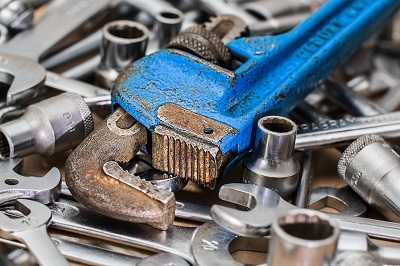What Are the Best Basic Auto Repair Tools to Have in Your Garage
Whether your garage contains a ’57 Chevy or a brand-new SUV, one of the best ways to spend your time is under the hood with some of your favorite tools. Whether it’s a simple job like changing the oil or a more complex task of trying to figure out why the “check engine” light is on, having the right tools to work with can make any job easier. To make sure you have what you need to tackle any auto problem that comes along, here are some essential repair tools you need to have in your garage.
Drop Light
In order to fix a problem, you’ve got to be able to see it. That’s why the garages of serious home mechanics have a drop light as part of their tool arsenal, helping them shed light into the deepest, darkest crevices of an engine. Unlike older drop lights that used incandescent bulbs, today’s drop lights are equipped with bright, long-lasting fluorescent bulbs.
Socket Set
To fix any engine properly, it takes a professional-quality set of ratchets, wrenches, and sockets. For most home mechanics, the set of choice is a 220-piece set that contains both metric and standard sizes. Most sets also contain a large assortment of screwdrivers and driver bits, making sure there’s no task that can’t be completed.
Hydraulic Jack
When it comes time to take a look underneath your car, having a 3-ton hydraulic jack is exactly what’s needed to get the job done. Most of today’s hydraulic jacks have a lift range between 4-18 inches and are made with rear swivel wheels, making it much easier to move the jack into position. The jack can be particularly useful when checking for corrosion damage on the car’s undercarriage, which can be very common in states like Utah where salt is used to melt snow that accumulates on the streets. If any damage is found, it’s best to contact an auto body repair shop that can seal the underside of the vehicle, making it resistant to any future corrosion.
Code Reader
With today’s cars being more computerized than ever, it’s important for any serious home auto mechanic to have a code reader alongside their ratchets and wrenches. By having a code reader, most problems that occur when a “check engine” light or other warning light comes on can be quickly diagnosed. Relatively easy to use, the device can usually be plugged into the vehicle’s on-board diagnostic port, which in most cases is located underneath the dash near the steering column.
Brake Bleeding Kit
No matter the vehicle, at some point the brakes will wear out and start to squeak and grind. When this happens, the brake lines can develop air pockets and will need to be bled to get the air out. In most cases this is a two-person job, but if your garage has a brake bleeding kit, it becomes a relatively simple one-person operation.
By having these and other tools in your garage, it’s possible to fix almost any problem that may develop with your vehicle. Whether it’s something as simple as changing the oil and other fluids or rebuilding an engine, these tools can guarantee that your classic ’57 Chevy or brand-new SUV will run like clockwork.


